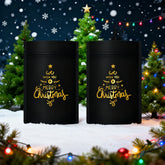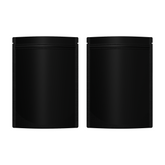Choosing Degassing and Non Degassing Valve Packaging
The Hot Topic: Degassing Valve or No Degassing Valve?
Have you ever come across packaging that has a little circular piece attached to one side? Believe it or not, this piece is not a fashion statement. Rather, it has a distinct purpose. In fact, the “piece” I am referring to is a degassing valve. If you don’t know what that is, do not worry. There’s plenty of time to get you well-acquainted with the feature. In this blog, I want to explain what a degassing valve is meant for and how it compares to packaging with no degassing valve. Ready? Ok, let’s dive right into it.

A degassing valve actually plays a pretty important role in preserving certain products. This feature is essentially a one-way vent that allows gas to exit the bag, while forbidding unwanted gases or moisture from entering into the bag. Pretty cool, right? This valve will help preserve the freshness of the products you store inside. After reading this, you might wonder why all bags don’t have this feature. To put it simply, not all products need this feature for storage. Depending on what you’re looking to store, choosing packaging with a degassing valve may or may not be what you need.
 |
 |

There are a couple of products and industries that first come to mind that will benefit from a degassing valve feature. First, the coffee industry. Specifically, coffee beans are a prime candidate for this type of bag. Why is that? Well, coffee beans release an excessive amount of carbon dioxide. Rather than keep it inside of the bag, the degassing valve will effortlessly release the unneeded gas. Releasing this carbon dioxide will even prevent the bag from bursting. Plus, it will preserve the freshness of the coffee beans for an extended period of time.
 |
 |
 |
Some products from the food industry can benefit from using valve packaging as well. Food like kimchi, sauerkraut, pickles, and yogurt all go through a fermentation process that can be aided by the degassing valve. Fermentation is the process in which energy is taken out from carbohydrates due to a lack of oxygen. Thus, the food will change into a different substance. Because the degassing valve will prevent bacteria and gasses, these food items will be properly fermented and preserved. QQ Studio has an abundance of quality color packaging that includes a degassing valve. If you need this type of packaging, you would love our new coffee valve bag. This bag is offered in several color and size options for you to select.
Packaging with No Degassing Valve
There are plenty of bags without degassing valves that serve a purpose for the product stored inside. Aside from coffee and (some) food products, your products should be totally fine in regular packaging. Packaging like our double-sided Stand Strong™ bag is still great for food storage because the metallic film material will preserve it for longer. This bag is totally secure too. Once sealed, nothing will be able to enter or leave the bag. If you are looking to keep all elements of your product confined to the inside, then bags with no degassing valves are the way to go. In some cases, packaging with no valve might even be better for preserving the fragrance of your product. To keep all aromas inside of the bag, I would recommend taking this route. Some people prefer using bags with no degassing valve for coffee products as well. While it is suggested that the bag could explode, others say they have yet to come across non-degassing bags that have done so. Plus, the same idea of preserving the aroma of the coffee beans is a factor.
 |
 |
Overall
There’s a time and place for using both bags with degassing valves and bags without. I hope you have a better understanding of the difference between the two. When choosing packaging, always remember to keep the needs of your product in mind. Some products have more packaging requirements than others. As long as you weigh out your options, you should be good to go with the help of this guide. There are other packaging need-to-know blogs you should read too. If you like this, check out our other blog on how to package food for long term storage.






